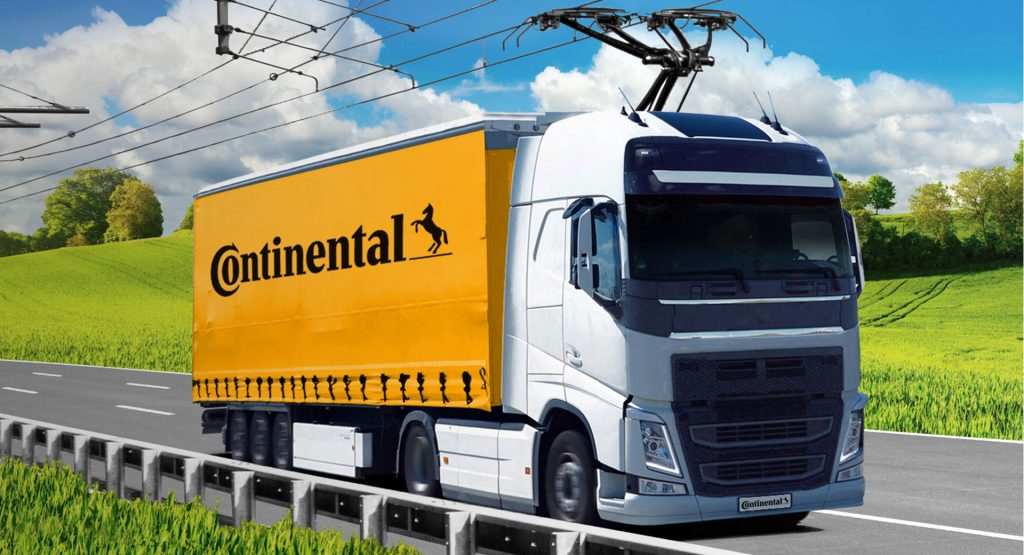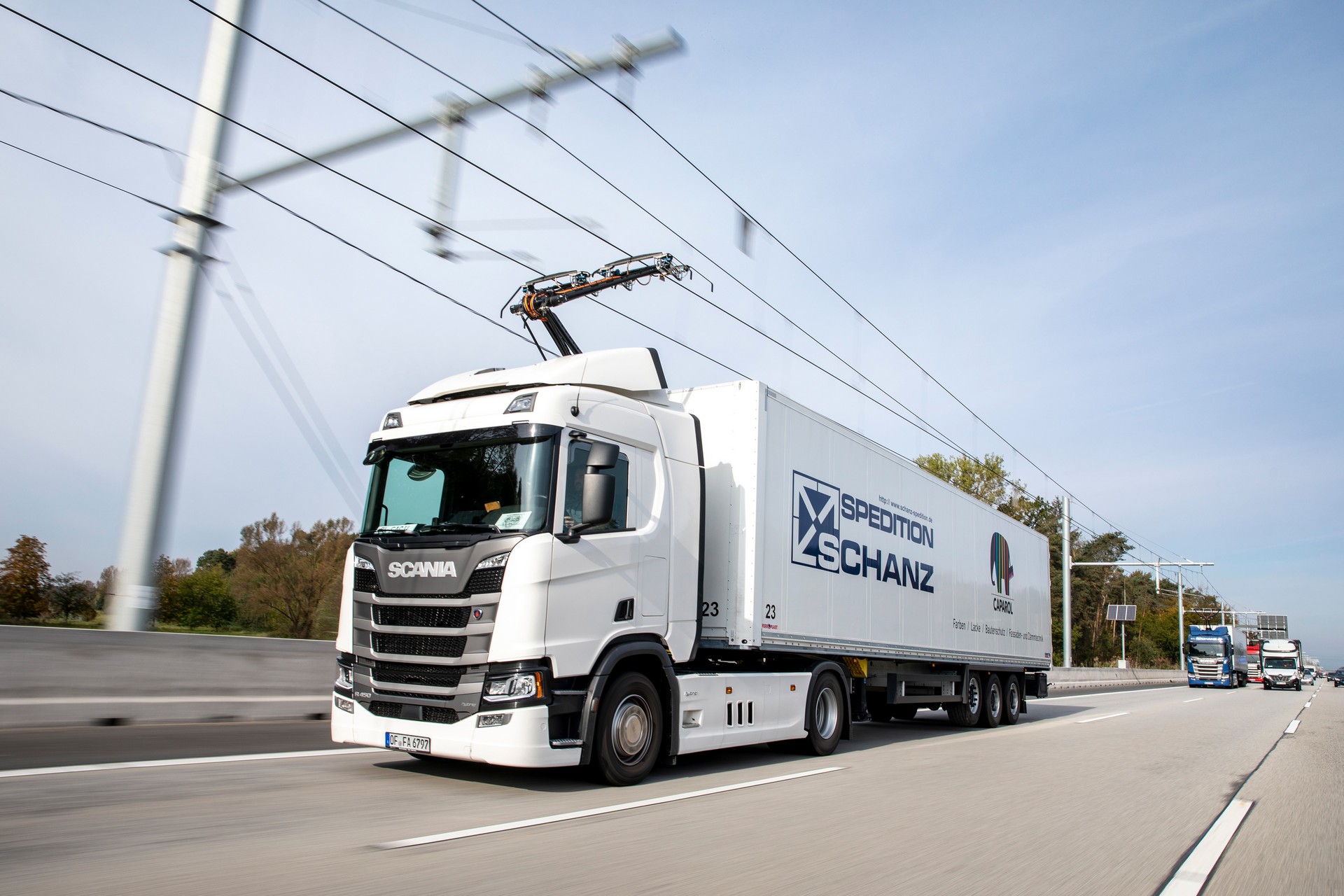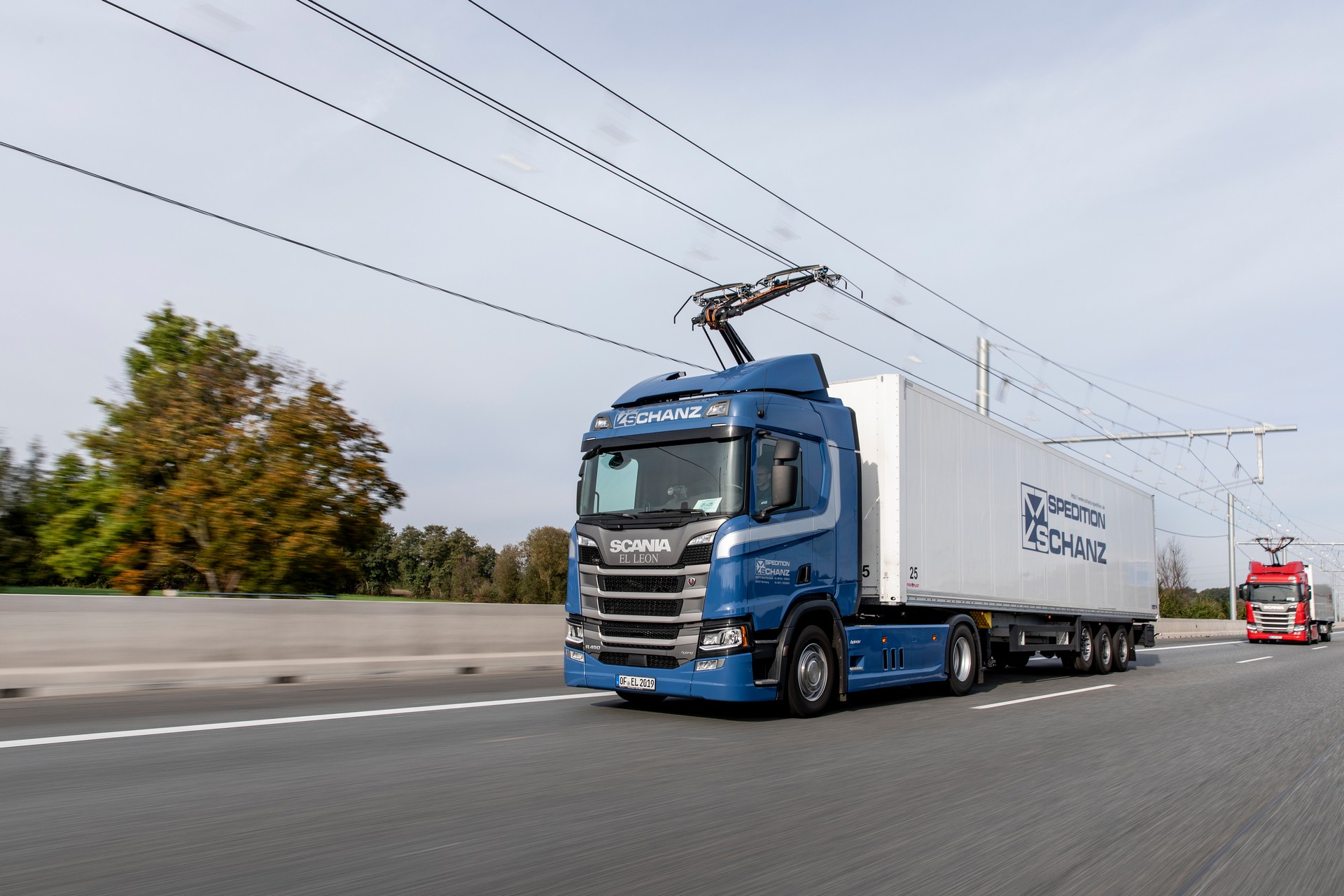A number of companies are working on electric semis and transportation trucks, but drivers will have to deal with limited ranges and lengthy recharging times.
While those issues also affect electric passenger vehicles, they’re more problematic when it comes to transporting goods. However, the solution could come by looking to the past.
In particular, Continental Engineering Services and Siemens Mobility are teaming up to develop and produce “current collectors” known as pantographs. Most commonly associated with electric trains and trams, pantographs are mounted on top of the vehicle and get electricity from overhead lines.
Also Read: UK Approves E-Highway Scheme, Installs Overhead Wires On Motorway To Charge Trucks
The two companies envision having overhead cabling installed on “heavily frequented stretches of highway.” Trucks and semis would simply drive underneath them and the cables would power their electric motors while also recharging their batteries at the same time. It’s also worth mentioning the system is envisioned to work not only with electric vehicles, but also trucks with fuel cell and hybrid powertrains.
Siemens Mobility’s eHighway technology is currently being tested at three different sites in Germany and the Federal Ministry of Transport estimates that only 2,485 miles (4,000 km) of the country’s 8,078 mile (13,000 km) long network would need to be equipped with overhead cabling. This is because around two thirds of fuel consumption by long-distance truck traffic occurs on less than a third of the road network.
While the technology has already proven itself, the companies noted there is still work to be done as they need to develop current collectors that can be offered to commercial vehicle manufacturers cost-effectively and in significant volumes. That’s a key reason for the partnership and, if successful, overhead line systems could eventually popup across Europe.
According to Continental Engineering Services Managing Director Christoph Falk-Gierlinger, “We are transferring the principle of rail electrification to the road.” He added the “current collectors will be developed and produced in accordance with automotive standards,” and noted the partnership is a “major step toward climate-neutral freight transport.”






